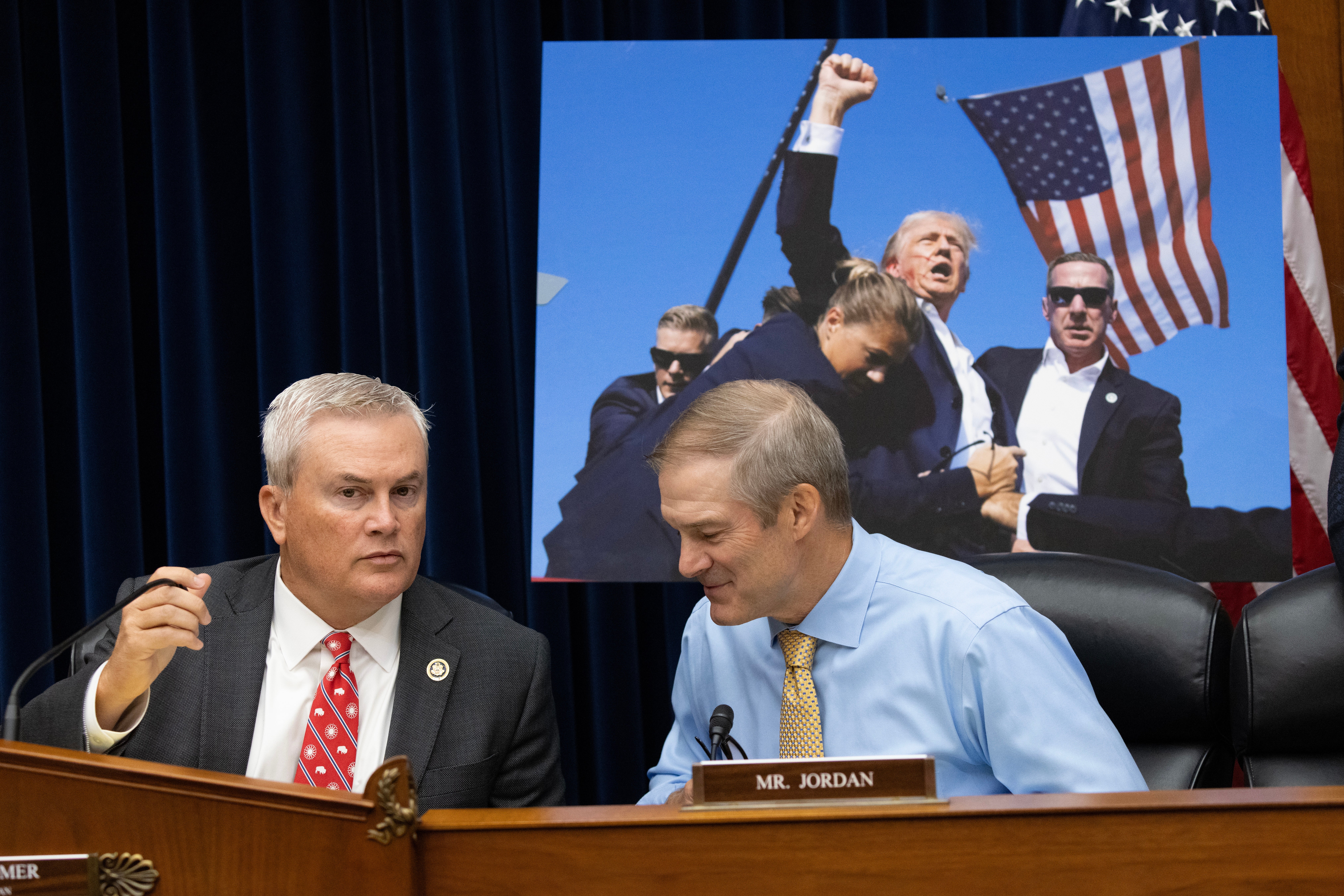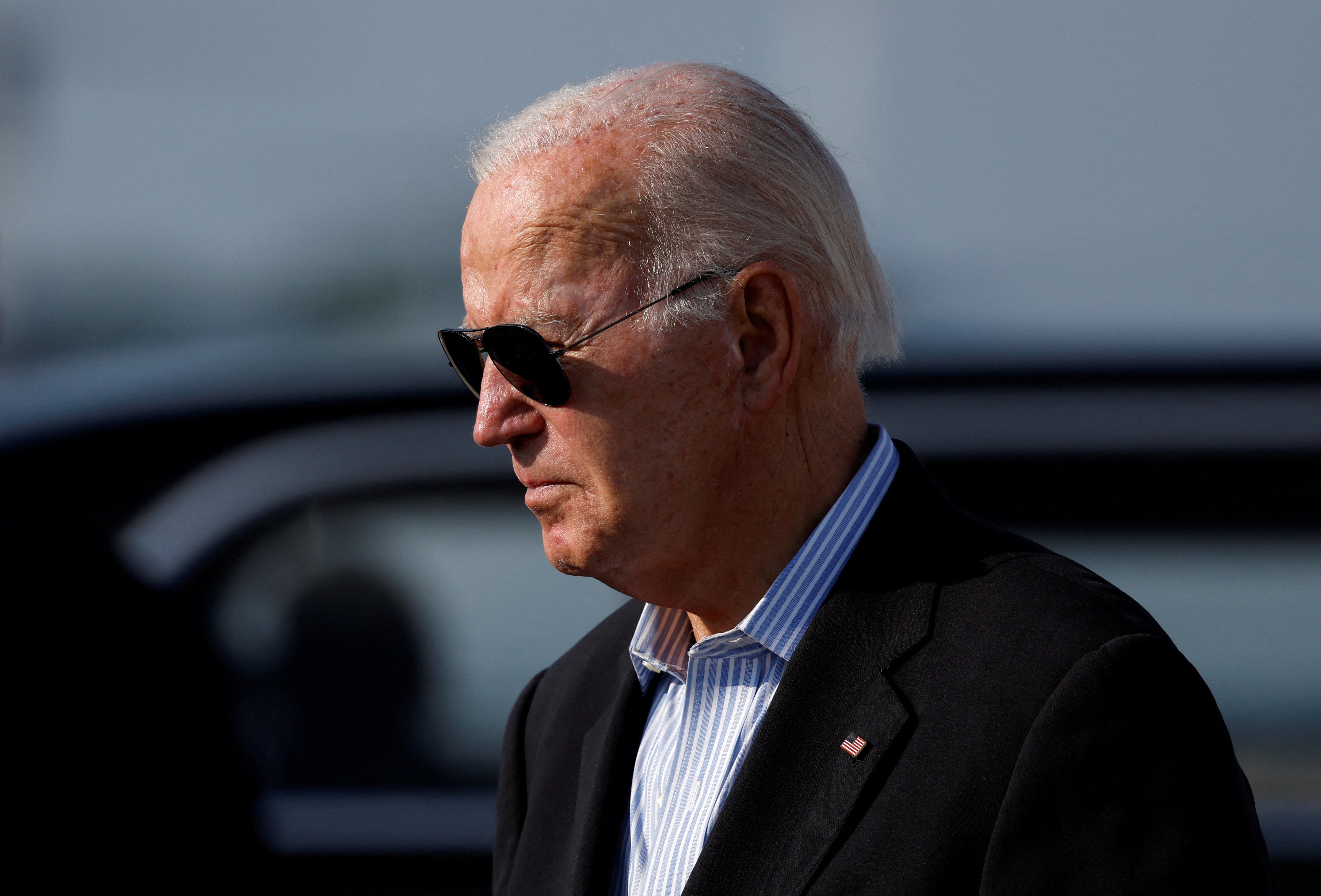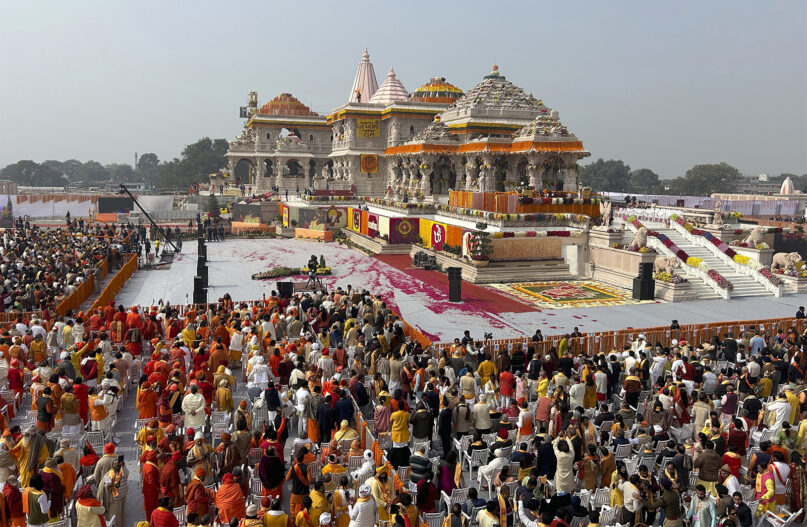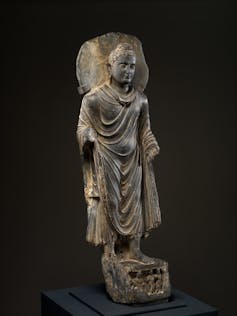'Record number' of humanitarian workers killed in 2023, UN says
The United Nations on Monday condemned "unacceptable" levels of violence that are now commonplace against humanitarian workers after a record 280 were killed worldwide in 2023. It warned that the Israel-Hamas war in Gaza is potentially fueling even higher numbers of such deaths this year
Issued on: 19/08/2024 -

United Nations and Red Crescent workers prepare the aid for distribution to Palestinians at UNRWA warehouse in Deir Al-Balah, Gaza Strip, on Monday, 23 October, 2023. © Hassan Eslaiah / AP
By: RFI
"The normalization of violence against aid workers and the lack of accountability are unacceptable, unconscionable and enormously harmful for aid operations everywhere," Joyce Msuya, acting director of the UN's Office for the Coordination of Humanitarian Affairs (OCHA), said in a statement on World Humanitarian Day.
"With 280 aid workers killed in 33 countries last year, 2023 marked the deadliest year on record for the global humanitarian community," a 137 percent increase over 2022, when 118 aid workers died, OCHA said in the statement.
It cited the Aid Worker Security Database which has tracked such figures back to 1997.
The UN said 163 of those killed in 2023 were aid workers killed in Gaza during the first three months of the war between Israel and Hamas, mainly in air strikes.
South Sudan, wracked by civil strife, and Sudan, where a war between two rival generals has been raging since April 2023, are the next deadliest conflicts for humanitarians, with 34 and 25 deaths respectively.
"The normalization of violence against aid workers and the lack of accountability are unacceptable, unconscionable and enormously harmful for aid operations everywhere," Joyce Msuya, acting director of the UN's Office for the Coordination of Humanitarian Affairs (OCHA), said in a statement on World Humanitarian Day.
"With 280 aid workers killed in 33 countries last year, 2023 marked the deadliest year on record for the global humanitarian community," a 137 percent increase over 2022, when 118 aid workers died, OCHA said in the statement.
It cited the Aid Worker Security Database which has tracked such figures back to 1997.
The UN said 163 of those killed in 2023 were aid workers killed in Gaza during the first three months of the war between Israel and Hamas, mainly in air strikes.
South Sudan, wracked by civil strife, and Sudan, where a war between two rival generals has been raging since April 2023, are the next deadliest conflicts for humanitarians, with 34 and 25 deaths respectively.
Call to end impunity
Also in the top 10 are Israel and Syria, with seven deaths each; Ethiopia and Ukraine, with six deaths each; Somalia at five fatalities; and four deaths both in Myanmar and the Democratic Republic of Congo.
In all the conflicts, most of the deaths are among local, rather than visiting foreign staff.
"We demand an end to impunity so that perpetrators face justice," UN Secretary-General Antonio Guterres said.
Despite 2023's "outrageously high number" of aid worker fatalities, OCHA said 2024 "may be on track for an even deadlier outcome."
France condemns killing of Gaza NGO workers as US pressed to toughen stance with Israel
As of 9 August, 176 aid workers have been killed worldwide, according to the Aid Worker Security Database.
Since October, when Hamas-led militants launched a deadly raid into Israel, triggering the war, more than 280 aid workers have been killed in Gaza, the majority of them employees of the UN agency for Palestinian refugees, according to OCHA.
Against this backdrop, the leaders of multiple humanitarian organisations and UN agencies sent a letter Monday to UN member states calling for the end of "an era of impunity."
"Attacks that kill or injure civilians, including humanitarian and health-care personnel, are devastatingly common," said the letter, signed by groups including the World Food Programme and the International Committee of the Red Cross.
"Yet despite widespread condemnation, serious violations of the rules of war too often go unpunished."
Also in the top 10 are Israel and Syria, with seven deaths each; Ethiopia and Ukraine, with six deaths each; Somalia at five fatalities; and four deaths both in Myanmar and the Democratic Republic of Congo.
In all the conflicts, most of the deaths are among local, rather than visiting foreign staff.
"We demand an end to impunity so that perpetrators face justice," UN Secretary-General Antonio Guterres said.
Despite 2023's "outrageously high number" of aid worker fatalities, OCHA said 2024 "may be on track for an even deadlier outcome."
France condemns killing of Gaza NGO workers as US pressed to toughen stance with Israel
As of 9 August, 176 aid workers have been killed worldwide, according to the Aid Worker Security Database.
Since October, when Hamas-led militants launched a deadly raid into Israel, triggering the war, more than 280 aid workers have been killed in Gaza, the majority of them employees of the UN agency for Palestinian refugees, according to OCHA.
Against this backdrop, the leaders of multiple humanitarian organisations and UN agencies sent a letter Monday to UN member states calling for the end of "an era of impunity."
"Attacks that kill or injure civilians, including humanitarian and health-care personnel, are devastatingly common," said the letter, signed by groups including the World Food Programme and the International Committee of the Red Cross.
"Yet despite widespread condemnation, serious violations of the rules of war too often go unpunished."
Gratitude
Each year the United Nations marks World Humanitarian Day on 19 August, the anniversary of the 2003 attack on its Baghdad headquarters.
The bombing killed 22 people including Sergio Vieira de Mello, the UN special representative to Iraq, and injured some 150 local and foreign aid workers.
Marking World Humanitarian Day, the United States said "we owe humanitarian workers our gratitude for their service and our commitment."
"We reaffirm our steadfast commitment to this work and continue to urge international partners to join us in stepping up their contributions to address growing humanitarian needs around the world," said the statement from National Security Council spokesman Sean Savett, which did not mention the record death toll.
(with AFP)
UN warns of 'unacceptable' level of violence against aid workers
United Nations (United States) (AFP) – The United Nations on Monday condemned "unacceptable" levels of violence that are now commonplace against humanitarian workers after a record 280 were killed worldwide in 2023.
Issued on: 19/08/2024


United Nations (United States) (AFP) – The United Nations on Monday condemned "unacceptable" levels of violence that are now commonplace against humanitarian workers after a record 280 were killed worldwide in 2023.
Issued on: 19/08/2024

On World Humanitarian Day the UN lashed out at the 'unacceptable' violence that has led to the deaths of 280 aid workers in 2023 © Carl DE SOUZA / AFP/File
And it warned that the Israel-Hamas war in Gaza is potentially fueling even higher numbers of such deaths this year.
"The normalization of violence against aid workers and the lack of accountability are unacceptable, unconscionable and enormously harmful for aid operations everywhere," Joyce Msuya, acting director of the UN's Office for the Coordination of Humanitarian Affairs (OCHA), said in a statement on World Humanitarian Day.
"With 280 aid workers killed in 33 countries last year, 2023 marked the deadliest year on record for the global humanitarian community," a 137 percent increase over 2022, when 118 aid workers died, OCHA said in the statement.
It cited the Aid Worker Security Database which has tracked such figures back to 1997.
The UN said 163 of those killed in 2023 were aid workers killed in Gaza during the first three months of the war between Israel and Hamas, mainly in air strikes.
And it warned that the Israel-Hamas war in Gaza is potentially fueling even higher numbers of such deaths this year.
"The normalization of violence against aid workers and the lack of accountability are unacceptable, unconscionable and enormously harmful for aid operations everywhere," Joyce Msuya, acting director of the UN's Office for the Coordination of Humanitarian Affairs (OCHA), said in a statement on World Humanitarian Day.
"With 280 aid workers killed in 33 countries last year, 2023 marked the deadliest year on record for the global humanitarian community," a 137 percent increase over 2022, when 118 aid workers died, OCHA said in the statement.
It cited the Aid Worker Security Database which has tracked such figures back to 1997.
The UN said 163 of those killed in 2023 were aid workers killed in Gaza during the first three months of the war between Israel and Hamas, mainly in air strikes.

Aid workers deaths at record high in 2023 © Valentin RAKOVSKY, Thierno TOURE / AFP
South Sudan, wracked by civil strife, and Sudan, where a war between two rival generals has been raging since April 2023, are the next deadliest conflicts for humanitarians, with 34 and 25 deaths respectively.
Also in the top 10 are Israel and Syria, with seven deaths each; Ethiopia and Ukraine, with six deaths each; Somalia at five fatalities; and four deaths both in Myanmar and the Democratic Republic of Congo.
In all the conflicts, most of the deaths are of local employees, rather than visiting foreign staff.
The UN Security Council "deplored that 2023 was the deadliest year in history for aid workers," Sierra Leone Ambassador Michael Imran Kanu, who became chair of the body starting this month, said on its behalf after a closed-door meeting.
"If the international community fails them, we fail everyone who is in need of humanitarian aid," he added, reminding those involved in armed conflict of their "obligation" to international humanitarian law.
'Era of impunity'
"We demand an end to impunity so that perpetrators face justice," UN Secretary-General Antonio Guterres said.
Despite 2023's "outrageously high number" of aid worker fatalities, OCHA said 2024 "may be on track for an even deadlier outcome."
As of August 9, 176 aid workers have been killed worldwide, according to the Aid Worker Security Database.
Since October, when Hamas-led militants launched a deadly raid into Israel, triggering the war, more than 280 aid workers have been killed in Gaza, the majority of them employees of the UN agency for Palestinian refugees, according to OCHA.
Against this backdrop, the leaders of multiple humanitarian organizations and UN agencies sent a letter Monday to UN member states calling for the end of "an era of impunity."
"Attacks that kill or injure civilians, including humanitarian and health-care personnel, are devastatingly common," said the letter, signed by groups including the World Food Programme and the International Committee of the Red Cross.
"Yet despite widespread condemnation, serious violations of the rules of war too often go unpunished."
Each year, the United Nations marks World Humanitarian Day on August 19, the anniversary of a 2003 attack on its Baghdad headquarters.
The bombing killed 22 people including Sergio Vieira de Mello, the UN special representative to Iraq, and injured about 150 local and foreign aid workers.
Marking World Humanitarian Day, the United States said "we owe humanitarian workers our gratitude for their service and our commitment."
"We reaffirm our steadfast commitment to this work and continue to urge international partners to join us in stepping up their contributions to address growing humanitarian needs around the world," said the statement from US National Security Council spokesman Sean Savett, which did not mention the record death toll.
© 2024 AFP
South Sudan, wracked by civil strife, and Sudan, where a war between two rival generals has been raging since April 2023, are the next deadliest conflicts for humanitarians, with 34 and 25 deaths respectively.
Also in the top 10 are Israel and Syria, with seven deaths each; Ethiopia and Ukraine, with six deaths each; Somalia at five fatalities; and four deaths both in Myanmar and the Democratic Republic of Congo.
In all the conflicts, most of the deaths are of local employees, rather than visiting foreign staff.
The UN Security Council "deplored that 2023 was the deadliest year in history for aid workers," Sierra Leone Ambassador Michael Imran Kanu, who became chair of the body starting this month, said on its behalf after a closed-door meeting.
"If the international community fails them, we fail everyone who is in need of humanitarian aid," he added, reminding those involved in armed conflict of their "obligation" to international humanitarian law.
'Era of impunity'
"We demand an end to impunity so that perpetrators face justice," UN Secretary-General Antonio Guterres said.
Despite 2023's "outrageously high number" of aid worker fatalities, OCHA said 2024 "may be on track for an even deadlier outcome."
As of August 9, 176 aid workers have been killed worldwide, according to the Aid Worker Security Database.
Since October, when Hamas-led militants launched a deadly raid into Israel, triggering the war, more than 280 aid workers have been killed in Gaza, the majority of them employees of the UN agency for Palestinian refugees, according to OCHA.
Against this backdrop, the leaders of multiple humanitarian organizations and UN agencies sent a letter Monday to UN member states calling for the end of "an era of impunity."
"Attacks that kill or injure civilians, including humanitarian and health-care personnel, are devastatingly common," said the letter, signed by groups including the World Food Programme and the International Committee of the Red Cross.
"Yet despite widespread condemnation, serious violations of the rules of war too often go unpunished."
Each year, the United Nations marks World Humanitarian Day on August 19, the anniversary of a 2003 attack on its Baghdad headquarters.
The bombing killed 22 people including Sergio Vieira de Mello, the UN special representative to Iraq, and injured about 150 local and foreign aid workers.
Marking World Humanitarian Day, the United States said "we owe humanitarian workers our gratitude for their service and our commitment."
"We reaffirm our steadfast commitment to this work and continue to urge international partners to join us in stepping up their contributions to address growing humanitarian needs around the world," said the statement from US National Security Council spokesman Sean Savett, which did not mention the record death toll.
© 2024 AFP
















